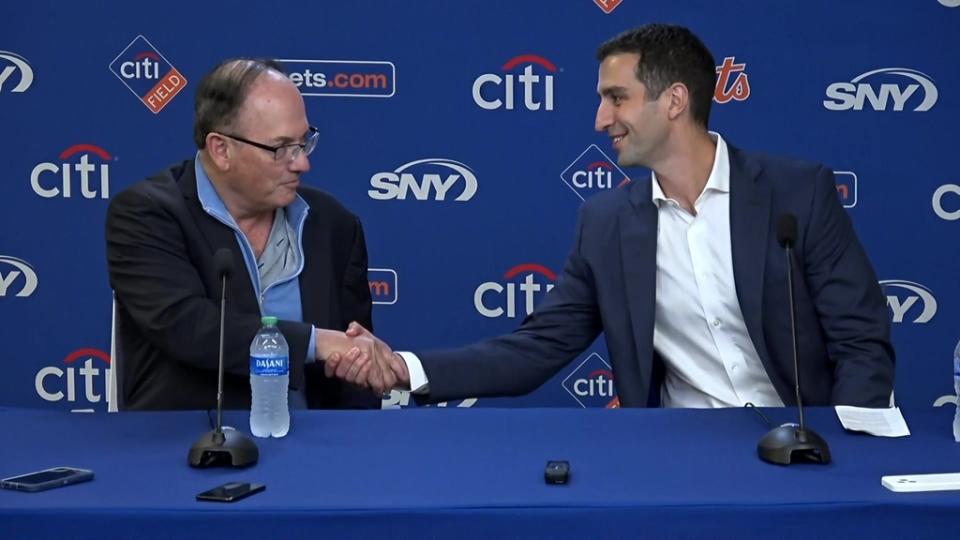Mets have serious payroll flexibility coming despite paying down Max Scherzer and Justin Verlander's contracts

When the Mets sold at the trade deadline a few months ago, they didn't simply unload players who weren't under contract beyond 2023. They went bold, also trading Max Scherzer and Justin Verlander -- pitchers who were supposed to anchor their rotation in 2024 (and in Verlander's case, perhaps 2025 as well).
It was a shock piled on top of the already-existing surprise that their season had gone so badly that they were, in effect, giving up.
But it can be argued that the Mets -- unlike the Angels (who doubled down at the deadline only to have it blow up in their faces) and Yankees (who basically did nothing) -- were at least aggressive in choosing a course.
And after choosing that course, the Mets were able to get back impact prospects while moving on from Scherzer and Verlander.
The cost to acquire those prospects, which was one owner Steve Cohen could obviously afford to incur, was eating significant chunks of the money still owed to the co-aces.
For Scherzer, the Mets ate $20.83 million of the $43.3 million he was due in 2024. As part of the trade to the Texas Rangers, Scherzer agreed to pick up his 2024 option, making the money guaranteed and allowing the Mets to eat a large portion.
For Verlander, the Mets ate $25 million of the $43.3 million he's owed in 2024. As it pertains to 2025, which is a vesting option year, the Mets will pay $17.5 million of the $35 million that will be owed if the option vests -- which will happen if Verlander pitches at least 140 innings in 2024.
The Mets accomplished two huge things by trading Scherzer and Verlander.

Most importantly, they acquired Luisangel Acuña (for Scherzer), Drew Gilbert, and Ryan Clifford (for Verlander).
The acquisitions of the above three players, two of whom could contribute in the majors as early as 2024, seriously bolstered a Mets farm system that is now viewed as one of the best in baseball -- especially as it pertains to high-impact position players.
Second, even though they ate significant portions of the money owed to Scherzer and Verlander, the Mets cleared a large chunk of money off their payroll for 2024 and 2025.
In 2024, the Mets will have roughly $40 million off the books that otherwise would've been paid to Scherzer and Verlander.
In 2025, they'll have an additional $35 million to spend if Verlander's option doesn't vest or an extra $17.5 million to spend if it does.
Looking beyond 2024, the Mets' payroll situation opens up in a big way.
Here is New York's projected 40-man roster salary obligations over the next five seasons:
2024: $201.8 million
2025: $125.5 million
2026: $102.2 million
2027: $88.4 million
2028: $55.2 million

It's at this point that some will wonder why the Mets' payroll obligations matter with Cohen at the helm.
Surely, he can afford to do whatever he wants -- payroll levels and penalties for exceeding the luxury tax be damned.
Technically, Cohen can probably afford to spend with reckless abandon every year. But it is not the way he is going to operate, and it is not a smart way to build sustainable success -- which is what the Mets are trying to do under Cohen and new head of baseball operations David Stearns.
Yes, the Mets will probably have one of the highest payrolls in baseball every season. But their goal is almost certainly to get back under the luxury tax threshold in the next season or two in order to avoid the penalties (draft pick-wise, especially) that come along with exceeding it.
And by clearing a large chunk of Scherzer and Verlander's money off the books, while at the same time bringing in prospects who can make a serious impact as soon as 2024, the Mets have basically given themselves the best of both worlds.
They can go big via free agency this offseason, replacing the Scherzer and Verlander money with a pitcher or pitchers who can grow with the young core the Mets are assembling -- perhaps headlined by 25-year-old Japanese ace Yoshinobu Yamamoto.
While doing that, the Mets will be waiting for the arrivals of Acuña, Gilbert and others to supplement the big league roster they ultimately put together for 2024.
There is no erasing the bitter disappointment that was the Mets' 2023 season. But it can be argued that by going through it -- and acting decisively at the trade deadline -- they are set up much better for 2024 and beyond than they otherwise would've been.

